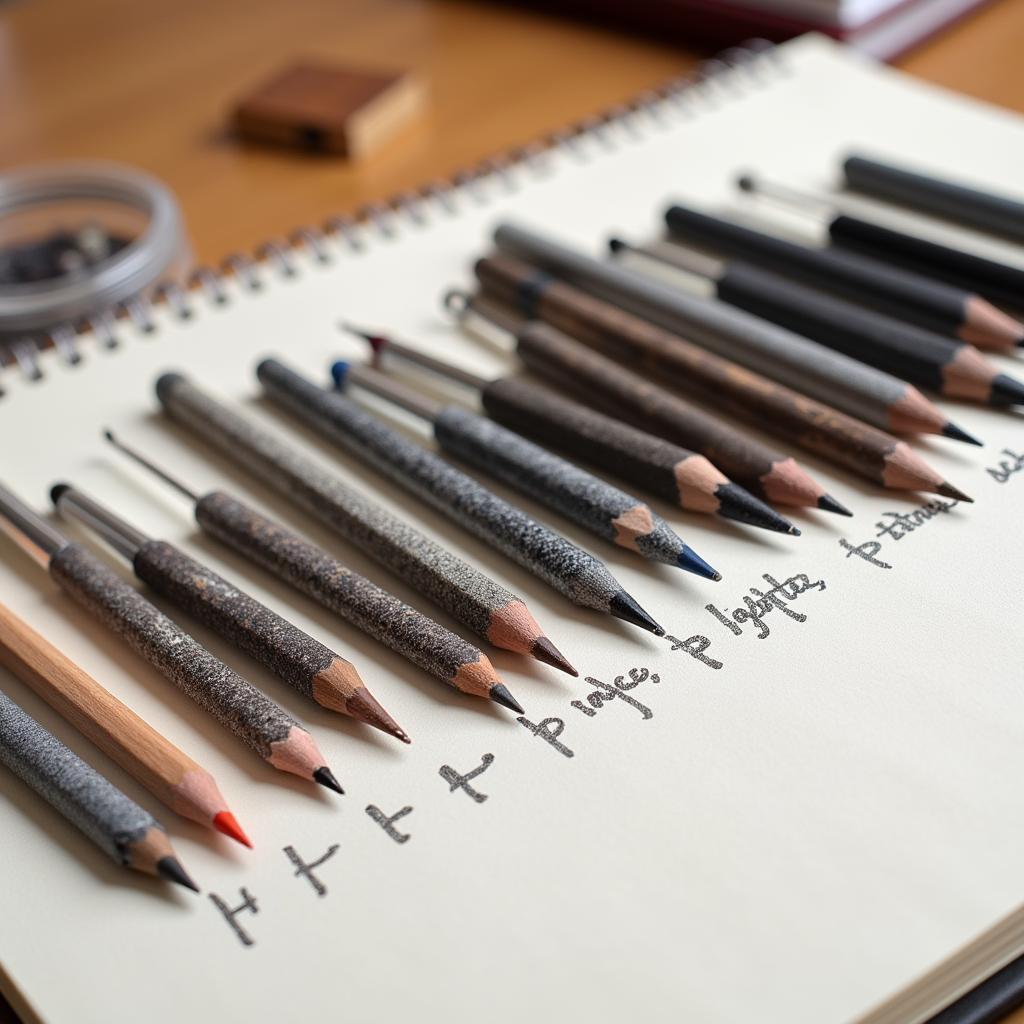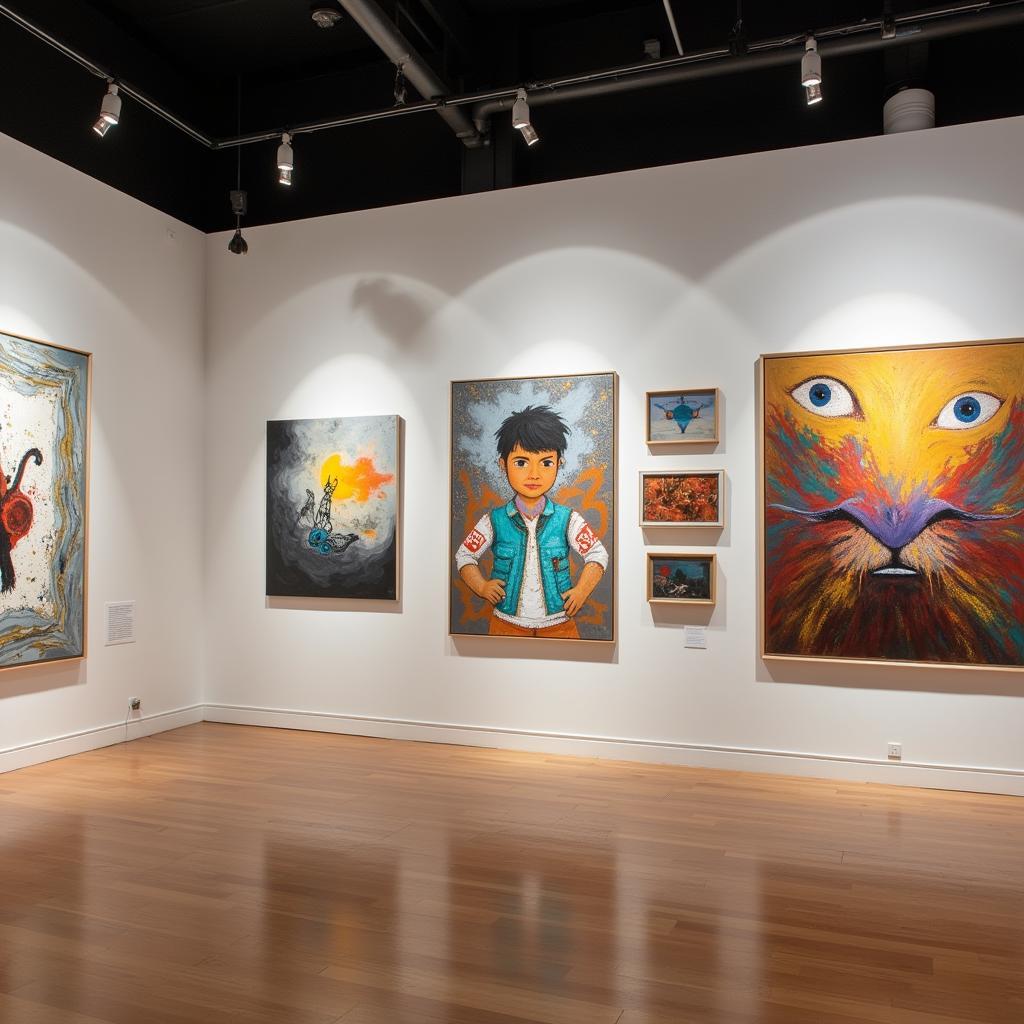Mastering Art Supply Drawings: A Beginner’s Guide
Delving into the world of art can be both exciting and intimidating, especially when faced with a plethora of art supply drawings. Understanding the basics of different art supplies and their unique properties is crucial for any aspiring artist. This guide will equip you with the knowledge to confidently approach your next drawing, from choosing the right pencil to creating stunning effects.
Choosing the Right Drawing Tools
Just like a chef needs quality ingredients, an artist thrives with the right tools. While the range of art supplies might seem overwhelming, understanding their individual strengths can dramatically enhance your drawing experience.
Pencils: The Foundation of Drawing
Pencils are a staple in any artist’s toolkit, offering a range of tones and textures. They are categorized by their graphite hardness, indicated by a letter and number grading system.
- H pencils: These pencils have a hard lead, producing light, fine lines, perfect for sketching, technical drawings, and detailed work.
- B pencils: Softer than their H counterparts, B pencils create darker, richer marks, ideal for shading, blending, and expressive drawings.
- HB pencils: The middle ground, HB pencils offer a balanced hardness and darkness, making them versatile for various drawing styles.
 Different Pencil Grades for Drawing
Different Pencil Grades for Drawing
Experimenting with different pencil grades is crucial to discover what works best for your style and subject matter.
Charcoal: Capturing Depth and Texture
Charcoal offers a unique drawing experience, producing rich, velvety blacks and a wide range of grays.
- Vine charcoal: Lightweight and easy to blend, vine charcoal is perfect for creating preliminary sketches and achieving smooth gradations.
- Compressed charcoal: Denser and darker than vine charcoal, compressed charcoal is ideal for bold lines, dramatic contrasts, and detailed work.
Remember to use a fixative spray to prevent smudging when working with charcoal.
Exploring Different Drawing Papers
Just as important as the drawing tools themselves, the paper you choose can significantly impact your artwork.
- Sketch paper: Thin and economical, sketch paper is ideal for practicing, experimenting, and quick sketches.
- Drawing paper: Thicker and more durable than sketch paper, drawing paper can withstand repeated erasing and layering, making it suitable for finished drawings.
- Textured paper: Papers like cold-pressed or hot-pressed watercolor paper offer unique textures that can add depth and character to your drawings.
Ultimately, the best drawing book art paper depends on your individual preferences and the specific techniques you want to explore.
Mastering Basic Drawing Techniques
With the right tools and a basic understanding of their properties, you can start mastering fundamental drawing techniques.
Line Weight and Shading
Line weight refers to the thickness or thinness of your lines. Varying line weight can add dimension and interest to your drawings. Shading, on the other hand, involves creating different values (lightness or darkness) to depict form and volume.
Cross-Hatching and Stippling
Cross-hatching involves layering lines in different directions to create value and texture. Stippling, on the other hand, uses dots to achieve similar effects.
Blending and Erasing
Blending softens edges and creates smooth transitions between values. You can use your finger, a blending stump, or a cloth to blend. Erasers are not just for correcting mistakes; they can be used creatively to create highlights and lighten areas.
Conclusion
Mastering Art Supply Drawings is a journey of exploration and practice. By understanding the unique properties of different art supplies and practicing fundamental drawing techniques, you can unlock endless creative possibilities. So, gather your tools, embrace the process, and let your imagination flow onto the paper. Remember, the journey of a thousand drawings begins with a single stroke.
FAQs about Art Supply Drawings
1. What are the essential art supplies for beginners?
A basic drawing kit for beginners should include a set of pencils (HB, 2B, 4B), a kneaded eraser, a sharpener, and a sketchbook.
2. What is the best paper for practicing drawing?
Sketch paper is a cost-effective option for practice, while drawing paper offers a smoother surface for finished pieces.
3. How do I prevent my charcoal drawings from smudging?
Use a fixative spray to protect your charcoal drawings from smudging. Spray a light, even coat over the finished artwork.
4. Can I use colored pencils for art supply drawings?
Absolutely! Colored pencils offer a vibrant and versatile medium for creating detailed and expressive drawings.
5. Where can I find inspiration for my art supply drawings?
Inspiration can strike from anywhere! Look to nature, everyday objects, photographs, or explore online platforms like Pinterest and Instagram for creative prompts.
Don’t hesitate to reach out for support! Contact us at Phone Number: 02462573573, Email: danteum@gmail.com or visit us at Savico Megamall, 7-9 Đ. Nguyễn Văn Linh, Gia Thụy, Long Biên, Hà Nội 10000, Việt Nam. We have a 24/7 customer support team ready to assist you.


